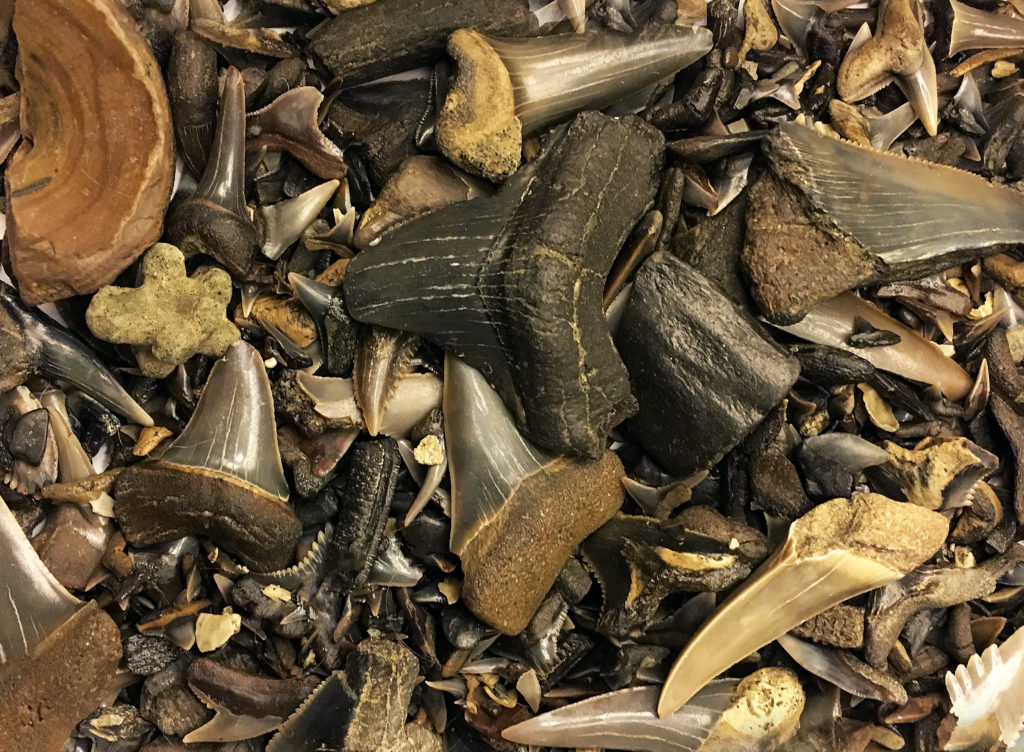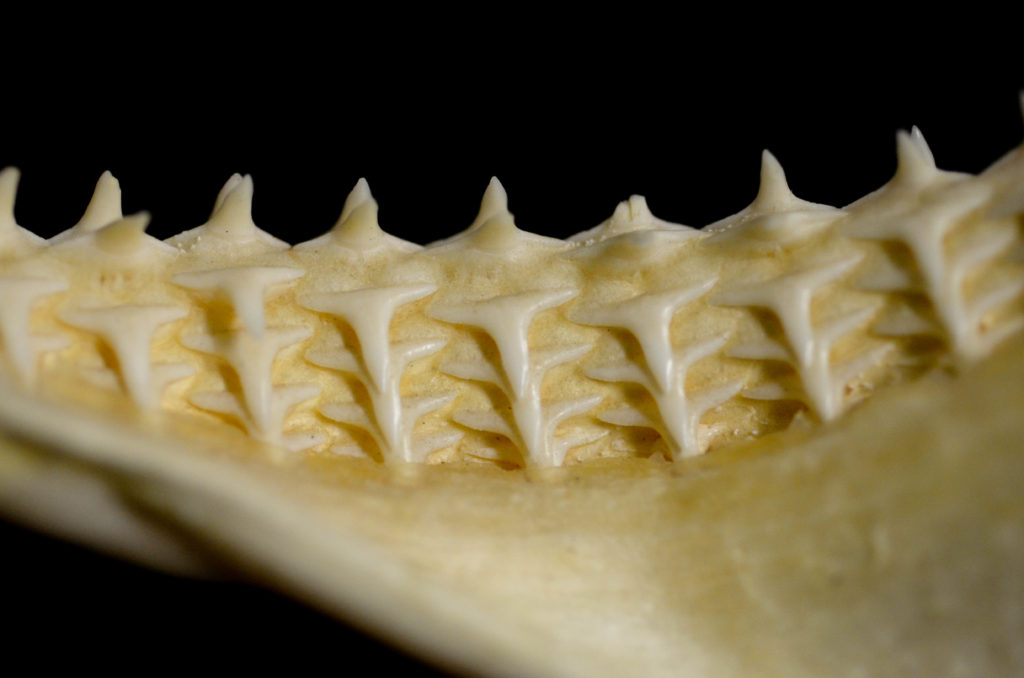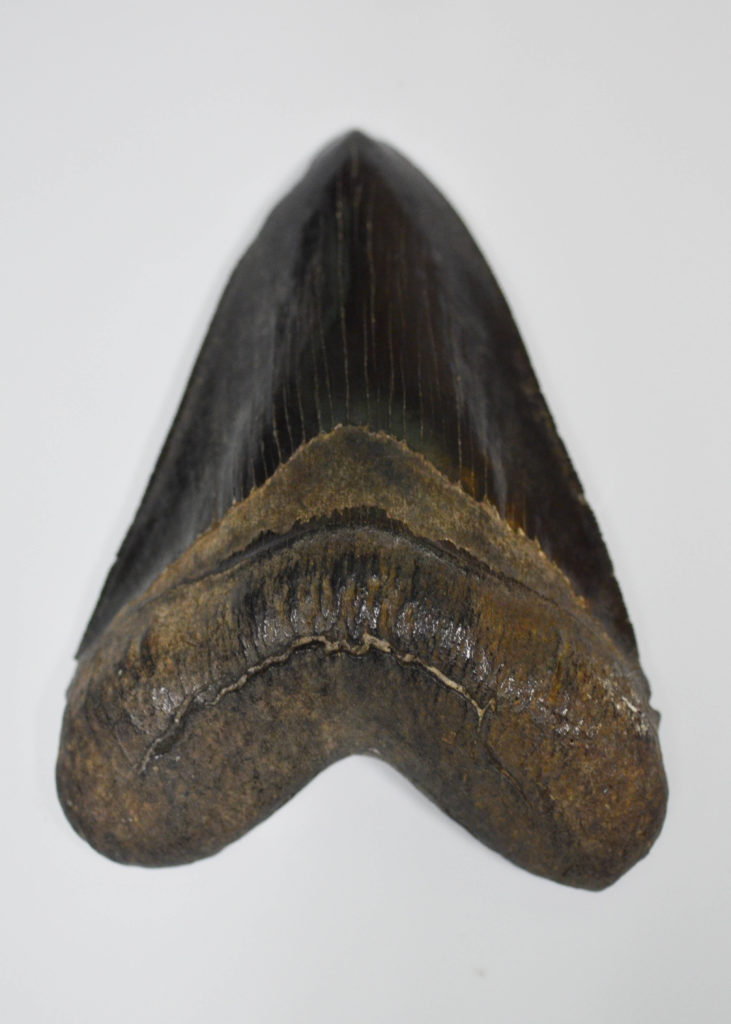Shark Teeth
By Virginia Fishes In Virginia FishesWhat most people think of first when they picture a shark is a mouthful of teeth.
As top-level predators, sharks’ teeth are indeed useful for catching food, but not all sharks eat the same foods and therefore they have different types of teeth.


Shark teeth come in many shapes and sizes!
Teeth are an excellent indicator of what a shark eats and how it catches its prey. There are over 350 species of sharks found throughout the world’s oceans, and their feeding habits vary widely; from the ferocious great white to the largest fish in the sea – the filter feeding whale shark. Great whites and other sharks that eat other large animals, (such as seals and large fishes) need large triangular-shaped teeth with serrated edges (like a steak knife) that not only penetrate flesh but produce a sawing effect when the shark shakes its head back and forth.


The serrated teeth of a sandbar shark
The thin needle-like teeth of a mako shark are for grasping fast swimming fishes that it hunts with speed in the open ocean. With so much space and so few feeding opportunities, the mako must hold on to the entire prey if it gets a chance, not just tear out one bite.


Rows of long, sharp mako shark teeth
Bottom dwelling sharks like horn sharks and nurse sharks have flattened teeth for crushing hard-shelled invertebrates like crabs and mollusks that they suck in form the sea floor. The Port Jackson shark has two kinds of teeth—short grooved teeth for grabbing and broad, rounded teeth for crushing hard-shelled prey. Teeth of filter-feeding sharks, such as whale sharks, are very small and of little practical use.


The crushing teeth of a Port Jackson shark
Because teeth are so vital to sharks, they are constantly replaced by new teeth. They are arranged in up to 5 rows, with rows of older teeth out front, and rows of newer teeth inside the mouth always ready to replace the old ones. Their teeth are not actually embedded in the jaw like ours, but in their flesh so they come out much easier. Some sharks may have up to 3,000 teeth at one time, which they lose most often during feeding. A single shark may shed over 30,000 teeth in a lifetime; no wonder there are so many shark teeth to find!


Rows and rows of replacement teeth
Shark teeth become fossilized and may remain whole for millions of years. If you are lucky maybe you can even find a few of these treasures at the nearby beaches of the Potomac, York, and James River, or you can come visit the new Shark Zone exhibit opening May 11 at the Virginia Living Museum with a fossil pit where you can dig up a real fossilized shark tooth of your own!


A mighty 7-inch tooth of the prehistoric Megalodon






No Comment
Sorry, the comment form is closed at this time.